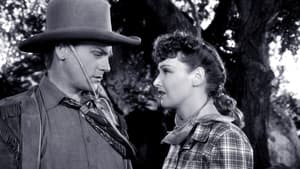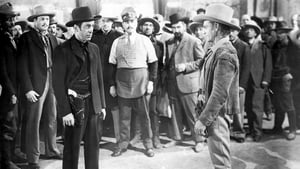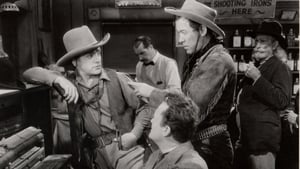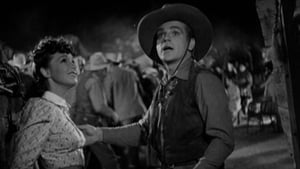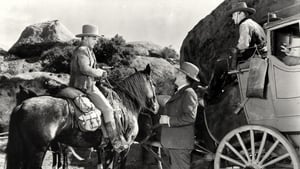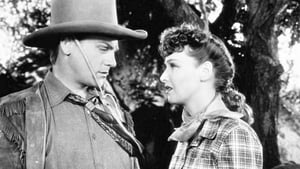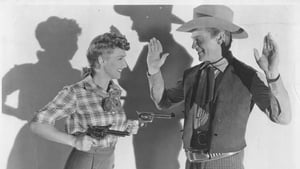Contact: [email protected]
Video Sources 0 Views
- The Oklahoma Kid

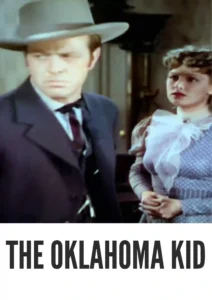
Synopsis
Table of Contents
ToggleReview: The Oklahoma Kid (1939) – A Classic Western Tale of Justice and Redemption

Introduction
“The Oklahoma Kid” (1939) gallops onto the silver screen with all the bravado and grit of a classic Western epic. In this article, we embark on a journey through the rugged landscapes of the Old West, exploring the significance of this timeless film and its enduring legacy in the annals of cinematic history.
Check The Full Colorized Movies List
Check Our Colorized Movies Trailer Channel
Understanding The Oklahoma Kid 1939: Director, Cast, and Genre
Directed by the esteemed Lloyd Bacon, “The Oklahoma Kid” (1939) channels the spirit of the Wild West with aplomb, delivering a thrilling tale of frontier justice and redemption. The film boasts a stellar cast, with James Cagney and Humphrey Bogart leading the charge as the titular character and his nemesis, respectively. Blending elements of action, drama, and romance, “The Oklahoma Kid” (1939) captivates audiences with its sweeping vistas and unforgettable characters.
Exploring the World of The Oklahoma Kid 1939: Plot and Characters
At its core, “The Oklahoma Kid” (1939) follows the exploits of a fearless gunslinger, portrayed by James Cagney, who takes on a corrupt sheriff and his gang of outlaws in a battle for justice and freedom. Along the way, he encounters a cast of colorful characters, from a feisty saloon owner played by Rosemary Lane to a charming gambler portrayed by Humphrey Bogart. As the bullets fly and the tensions escalate, the stage is set for a showdown that will determine the fate of the town and its inhabitants.
The Art of Film Colorization
Film colorization serves as a transformative tool that breathes new life into classic movies, allowing audiences to experience familiar stories in a fresh and vibrant light. By adding color to black and white films, colorization enhances the visual appeal of timeless classics and introduces them to a new generation of viewers. In the case of “The Oklahoma Kid” (1939), colorization imbues the film with a rich palette of hues, bringing its iconic characters and sweeping landscapes to vivid life.
Early Colored Films: A Brief History
The history of colored films traces its roots back to the early days of cinema, with filmmakers experimenting with various techniques to add color to their creations. From hand-tinted frames to early Technicolor processes, the evolution of colored film has been marked by innovation and ingenuity, paving the way for the development of modern colorization techniques that continue to captivate audiences to this day.
The Oklahoma Kid 1939 and Its Early Colored Version
The decision to release “The Oklahoma Kid” (1939) in a colorized format was met with both anticipation and trepidation. While some welcomed the opportunity to experience the film in vibrant color, others expressed concerns about the potential impact on its visual aesthetic. Nevertheless, the early colored version of “The Oklahoma Kid” (1939) offers viewers a fresh perspective on the classic Western, enhancing its immersive qualities and bringing its richly detailed world to vivid life.
The Debate Over Film Colorization
The debate over film colorization continues to divide audiences and critics alike, with proponents praising its ability to breathe new life into classic movies and introduce them to a new generation of viewers, while detractors argue that it compromises the artistic integrity of the original work and diminishes its historical significance. As the debate rages on, filmmakers and audiences alike are left to ponder the merits and drawbacks of colorization in the ever-evolving landscape of cinema.
Examining The Oklahoma Kid 1939 as an Early Colored Film
As with any colorized classic, the impact of colorization on “The Oklahoma Kid” (1939) is a matter of personal interpretation. Some may argue that it enhances the film’s visual appeal and immerses viewers in its world, while others may feel that it detracts from the stark beauty of the original black and white version. Regardless of one’s stance on the issue, there’s no denying the enduring power of “The Oklahoma Kid” (1939) as a timeless Western masterpiece that continues to captivate audiences with its thrilling action, memorable characters, and breathtaking cinematography.
Influence and Legacy: The Oklahoma Kid 1939’s Impact on Cinema
“The Oklahoma Kid” (1939) has left an indelible mark on the world of cinema, inspiring countless filmmakers and captivating audiences with its timeless tale of justice and redemption. From its unforgettable performances to its sweeping cinematography, the film continues to resonate with viewers of all ages, reaffirming its status as a beloved classic of the Western genre.
Director’s Cinematic Legacy: Beyond The Oklahoma Kid 1939
Lloyd Bacon’s influence extends far beyond “The Oklahoma Kid” (1939), with a diverse body of work that continues to captivate audiences around the globe. From “42nd Street” to “Yankee Doodle Dandy,” Bacon’s films are celebrated for their wit, charm, and sophistication, solidifying his legacy as one of the preeminent directors of Hollywood’s Golden Age. Through his groundbreaking work, Bacon has left an indelible imprint on the world of cinema, inspiring generations of filmmakers to follow in his footsteps.
Themes Explored in The Oklahoma Kid 1939
“The Oklahoma Kid” (1939) explores a myriad of themes, from the timeless struggle between good and evil to the redemptive power of justice and forgiveness. Through its richly drawn characters and powerful storytelling, the film invites viewers to ponder the complexities of the human condition and the enduring quest for righteousness in a world plagued by lawlessness and chaos. As audiences immerse themselves in the world of “The Oklahoma Kid” (1939), they are reminded of the timeless truths that bind us together and the indomitable spirit of the human soul.
Reception and Controversy Surrounding The Oklahoma Kid 1939
Upon its release, “The Oklahoma Kid” (1939) received widespread critical acclaim, with many praising its thrilling action sequences, compelling performances, and sweeping cinematography. However, the decision to release the film in a colorized format sparked debate among purists, reigniting the age-old discussion surrounding film preservation and artistic integrity. Despite the controversy, “The Oklahoma Kid” (1939) remains a beloved classic that continues to resonate with audiences of all ages, reaffirming its status as a timeless masterpiece of the Western genre.
Where to Watch The Oklahoma Kid 1939 Online
For those eager to experience the timeless magic of “The Oklahoma Kid” (1939), the film is readily available on popular streaming platforms such as Netflix, Amazon Prime, and Hulu. Whether you choose to watch it in its original black and white format or the early colored version, “The Oklahoma Kid” (1939) promises to transport you to a world of adventure and excitement, where the spirit of the Old West lives on in all its glory.
FAQs About The Oklahoma Kid 1939
Q: Is “The Oklahoma Kid” (1939) based on a true story? A: No, “The Oklahoma Kid” (1939) is a fictional tale crafted by screenwriter W. R. Burnett, who drew inspiration from various historical events and figures to create a thrilling Western adventure.
Q: Who are the main actors in “The Oklahoma Kid” (1939)? A: “The Oklahoma Kid” (1939) features a stellar cast led by the charismatic James Cagney in the title role, alongside Humphrey Bogart, who delivers a memorable performance as the film’s antagonist.
Q: What awards did “The Oklahoma Kid” (1939) win? A: While “The Oklahoma Kid” (1939) did not win any major awards, it remains a beloved classic of the Western genre, celebrated for its thrilling action, compelling performances, and timeless storytelling.
Q: Why was “The Oklahoma Kid” (1939) released in a colorized format? A: The decision to release “The Oklahoma Kid” (1939) in color was made to introduce the film to a new generation of viewers and enhance its visual appeal for modern audiences. While the choice to colorize the film sparked debate among purists, it ultimately allowed “The Oklahoma Kid” (1939) to reach a wider audience and ensure its continued relevance in the annals of cinematic history.
Conclusion
As we ride off into the sunset, let us remember the enduring legacy of “The Oklahoma Kid” (1939) and the timeless tale of justice and redemption it brings to life. Whether viewed in its original black and white format or the early colored version, the film remains a shining example of the power of cinema to inspire, entertain, and provoke thought. So, grab your hat and saddle up for the adventure of a lifetime as you experience the thrill and excitement of “The Oklahoma Kid” (1939) in all its glory.
